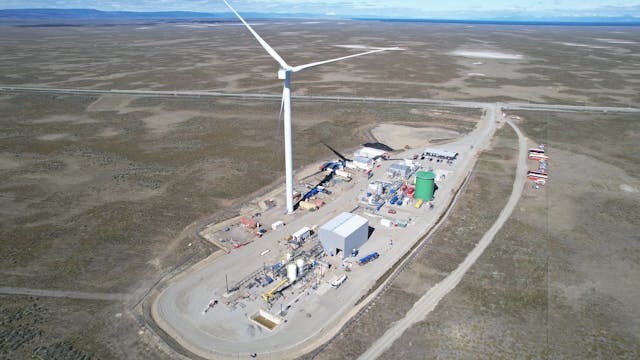Media | Articles
Porsche’s first synthetic-fuel factory is up and running
Plenty of companies are talking about synthetic fuel—a gasoline replacement that doesn’t use petroleum as its basis—and for a while, it seemed that Porsche was just one of them.
Then it started spending actual money on the idea.
“We believe that synthetic fuels produced with 100 percent renewable energy have the potential to be an important element [in the future]. For this reason, we are conducting research and development activities,” Porsche CEO Oliver Blume told Hagerty.com in late 2020. “Seventy percent of the cars we have ever built are still on the road, and for many years to come there will be cars powered by combustion engines,” he added.
By then, Porsche was already walking the walk. “We already have a pilot [program] running historic 911s, from the 993 [1995–98] series, with very good results. We’re also looking for partners. They’ll take care of the technology, and at the end they’ll produce the fuel,” Blume said then.
Fast-forward a little over two years, and Porsche and international partners working with the Chilean operating company Highly Innovative Fuels (HIF) have started the industrial production of synthetic gasoline, or eFuel.
Marketplace
Buy and sell classics with confidence

Tuesday, the Haru Oni Demonstration Plant in Punta Arenas, Chile, officially opened and Porsche Executive Board members Barbara Frenkel and Michael Steiner performed the ceremonial fueling of a Porsche 911 with the first synthetic fuel produced at the site.
The plant makes eFuel from water and carbon dioxide using wind energy, enabling the “nearly CO2-neutral operation of petrol engines.” The process generates hydrogen, which is then combined with captured carbon dioxide drawn from the atmosphere to produce methanol. This eFuel is anticipated to reduce greenhouse gas emissions by up to 85 percent when blended to current market fuel standards for today’s passenger vehicles.
“The potential of eFuels is huge. There are currently more than 1.3 billion vehicles with combustion engines worldwide. Many of these will be on the roads for decades to come, and eFuels offer the owners of existing cars a nearly carbon-neutral alternative,” said Steiner.

In this pilot phase at Haru Oni, synthetic fuel production of around 130,000 liters (34,342 gallons) per year is planned. Initially, the fuel is to be used for the Porsche Mobil 1 Supercup racing series and at Porsche Experience Centers such as the ones in Atlanta and Los Angeles.
After the pilot phase, the first increase will take the Chile plant up to a projected 55 million liters (14.53 million gallons) per year by the middle of the decade. Around two years later, the capacity is expected to be 550 million liters (145.3 million gallons). The plant is expected to go formally online next March.

Southern Chile, where the plant is located, offers ideal conditions for the production of synthetic fuels. The wind blows for around 270 days a year, enabling the wind turbines to operate at full capacity. Punta Arenas is also located close to the Strait of Magellan—from the port of Cabo Negro, the synthetic fuel can be transported just like traditional fuels all over the world.
Porsche has already invested over $100 million into the development and production of synthetic fuel, including pumping $75 million into HIF Global LLC last April 2022. HIF Global plans, builds, and operates eFuel plants in Chile, Australia, and soon, the United States. Headquartered in Houston, “HIF USA will begin on the Gulf Coast, where wind resources and CO2 are both abundant,” the company says. The goal of the Houston plant: “Produce 600 million gallons per year of eFuels.”
Check out the Hagerty Media homepage so you don’t miss a single story, or better yet, bookmark it.




Best news I have heard in a long time. Done without the the goverment .
It will be ironic if the environmental cradle-to-grave costs counting the useful lifespan and ability to recycle and/or restore end up favoring ye olde internal combustion…
Unfortunately this will not really be viable for a long time for the average collector. I see the cost here being very high and this does not cover the many issue on the oils we are losing that are needed with collector cars.
Also how will future emissions law effect out collector cars. We contribute so very little in the big picture but those in power do not consider that and really are out to ban all ICE at some point synthetic fuels or not.
I’m curious as to how they are producing the hydrogen. I’m, also, wondering if the methanol is intended to be used straight or, will it be blended.
At this time I only trust hybrids for general transportation for the foreseeable future. Would you really want to go off-roading in a new Hummer? This fuel could save some wonderful cars from becoming little more than museum specimens with lesser ones becoming unwanted or unsaleable.
on baby on baby